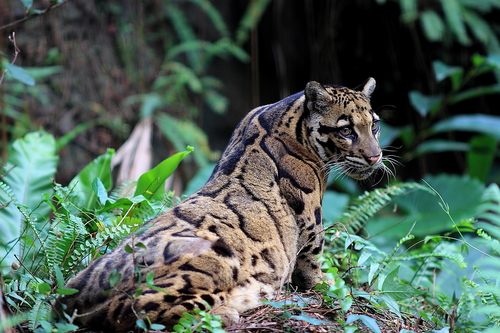
Clouded Leopard
The clouded leopard, with its strikingly patterned coat and arboreal agility, thrives in Southeast Asia's lush forests. Its unique climbing prowess and cloud-like spots make it an elusive and captivating predator, playing a vital role in its ecosystem as both a stealthy hunter and a symbol of biodiversity.
45626.0 kg
Weight
Length: 60 - 110 cm
Size
Brown, Grey, Yellow, Black, Tawny
Color
2-3 years
Age of Sexual Maturity
9 months
Age of Weaning
40 mph
Top Speed
Vulnerable
Conservation Status
Decreasing
Population Trend
Characteristics
Neofelis nebulosa, commonly known as the clouded leopard, is native to the dense forests of Southeast Asia. It boasts a unique coat patterned with large, cloud-like spots, aiding its camouflage. Known for its exceptional climbing abilities, this feline can descend trees headfirst, thanks to its flexible anklebones.
Distribution Range of the Clouded Leopard
Neofelis nebulosa, commonly known as the clouded leopard, is native to Southeast Asia. Its geographical distribution includes the Himalayan foothills through mainland Southeast Asia to southern China. Specific countries where it is found include Nepal, Bhutan, India, Myanmar, Thailand, Laos, Vietnam, Malaysia, and southern China, including the island of Hainan.
Clouded Leopard's Habitat
Environmental Conditions
The clouded leopard primarily inhabits tropical and subtropical forests. It thrives in dense forests, including both evergreen rainforests and deciduous forests. The climate in these regions is typically warm and humid, with significant rainfall throughout the year.
Ecological Niche
As an arboreal species, the clouded leopard is well adapted to life in the trees, where it hunts and finds refuge. Its ecological niche involves being a mid-level predator, preying on a variety of animals such as birds, monkeys, and small mammals. Its adaptations include a long tail for balance, large paws for climbing, and canines that are proportionally longer than any other wild cat's, aiding in capturing prey.
Copyright @ Nature Style Limited. All Rights Reserved.
 English
English